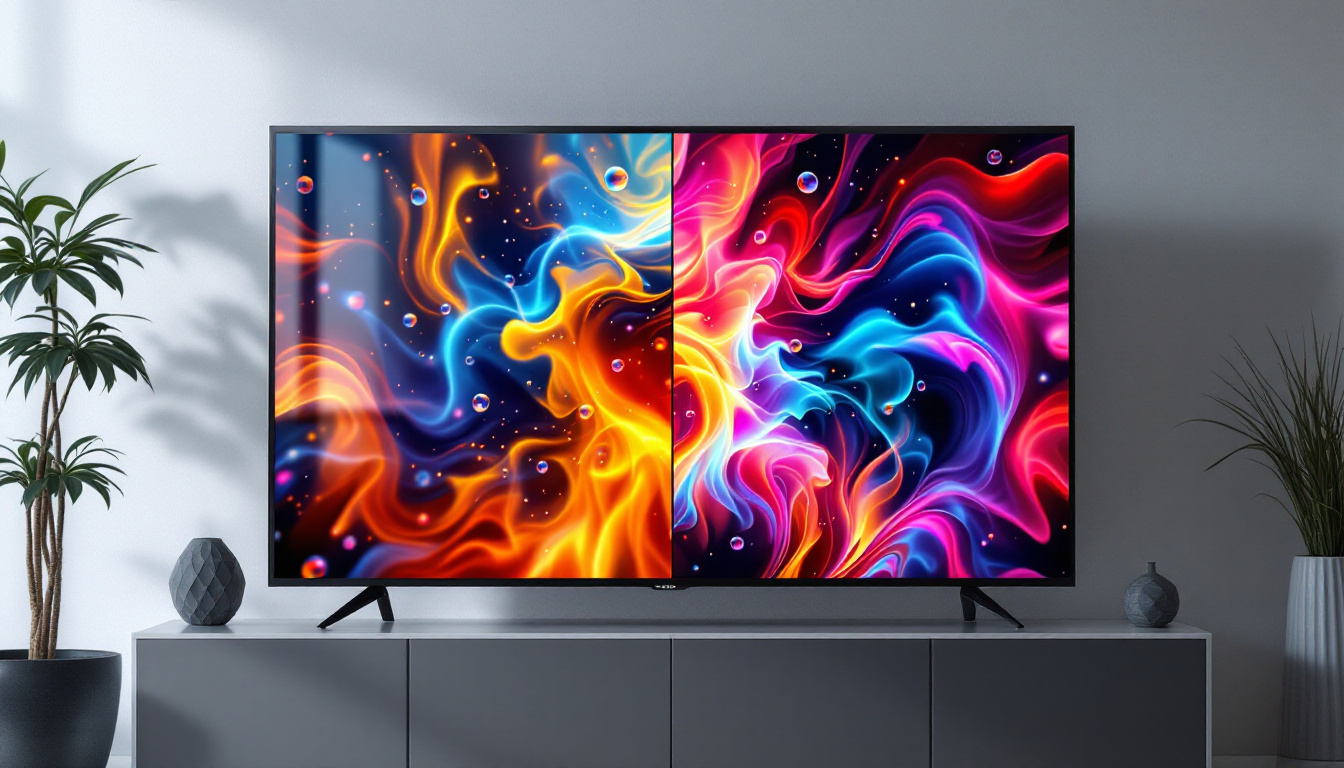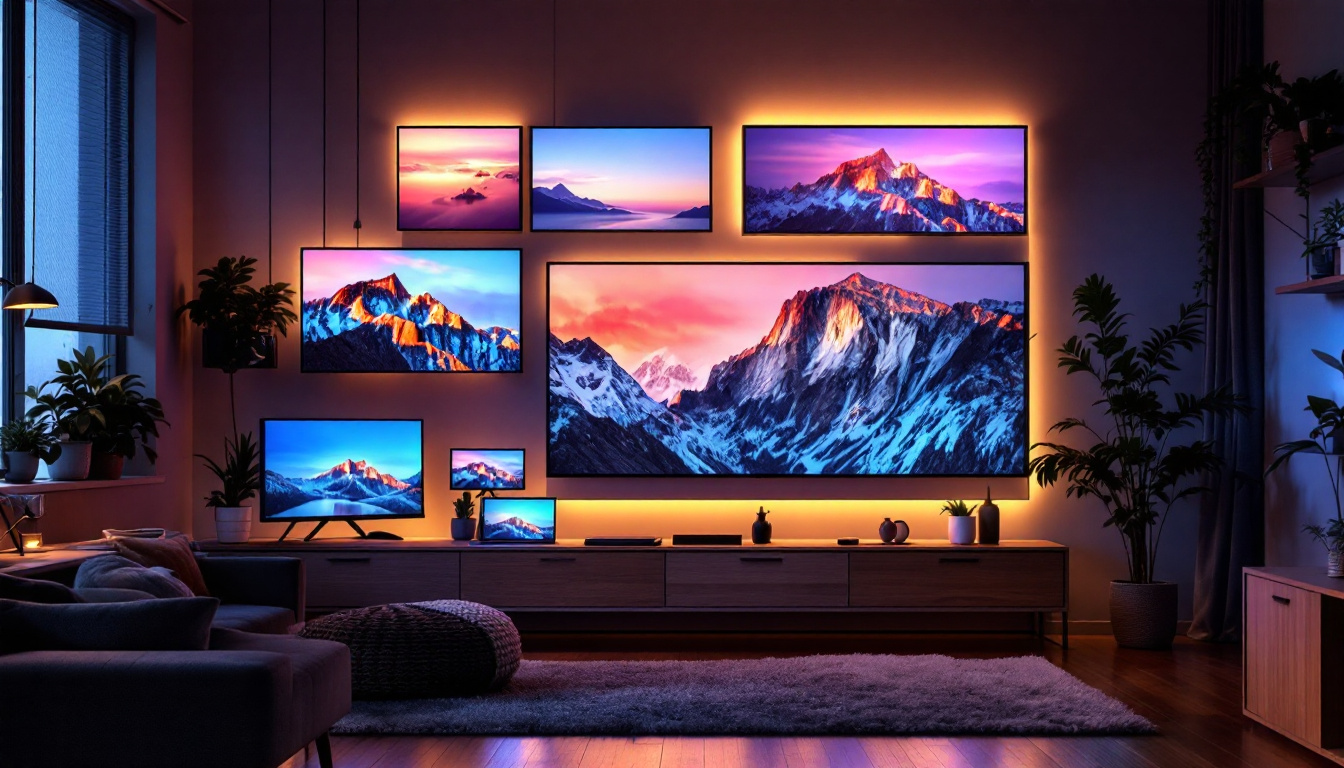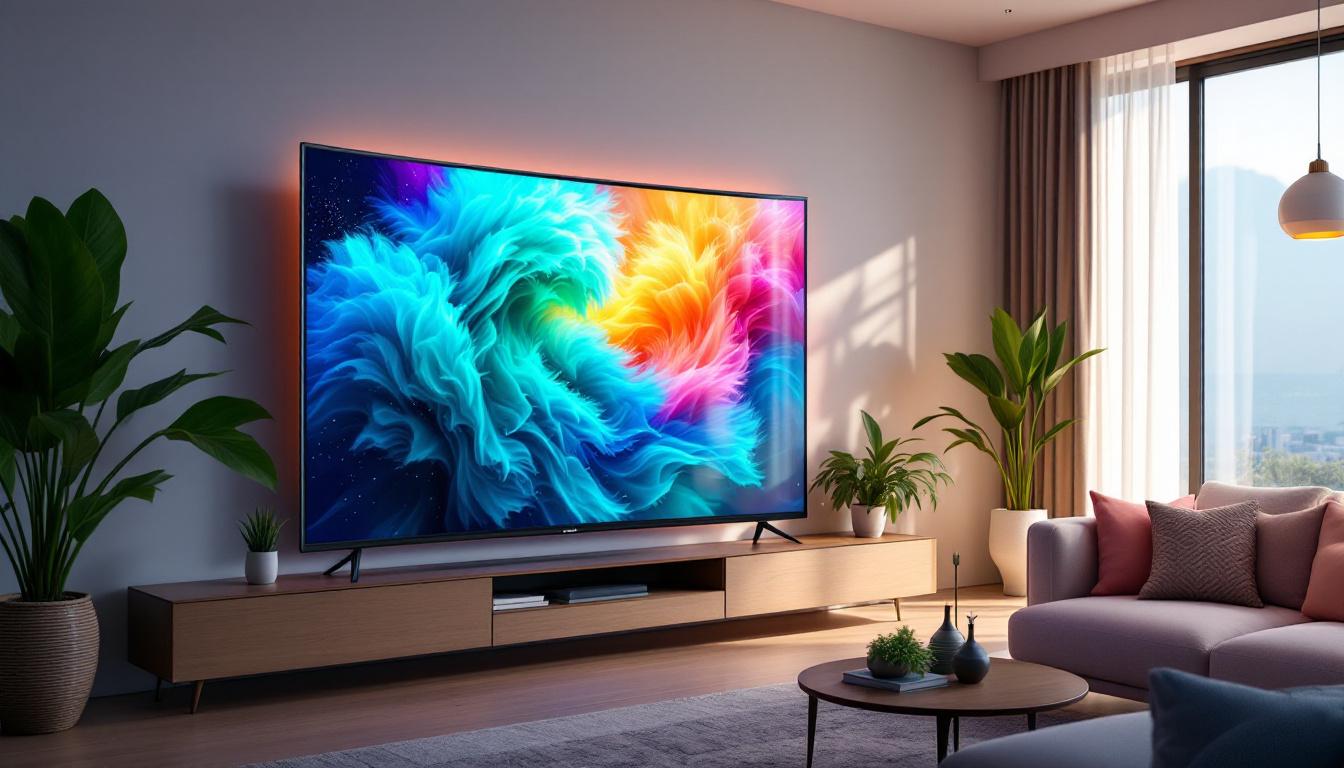In the realm of television technology, consumers often find themselves at a crossroads: should they choose a plasma display or an LCD screen? With the advent of LED technology, the landscape has become even more complex. This article aims to clarify the distinctions between plasma, LCD, and LED displays, helping consumers make informed decisions when purchasing a new television.
Understanding Display Technologies
At the core of the debate between plasma and LCD lies the fundamental technology that powers each display. Both have unique characteristics that cater to different viewing preferences and environments.
What is Plasma Technology?
Plasma displays utilize small cells filled with gas that emit ultraviolet light when an electric current is applied. This light then excites phosphors to produce visible images. Plasma screens are known for their vibrant colors and deep blacks, making them ideal for watching movies in dark environments.
One of the standout features of plasma technology is its wide viewing angles. Unlike many LCDs, which can suffer from color distortion when viewed from the side, plasma displays maintain consistent color and brightness, regardless of the viewer’s position. This characteristic is particularly beneficial in social settings where multiple viewers may be seated at various angles to the screen, ensuring that everyone enjoys a similar visual experience.
Additionally, plasma displays often have a higher refresh rate compared to their LCD counterparts, which results in smoother motion during fast-paced scenes, such as action movies or sports broadcasts. This makes plasma a favorite among cinephiles and sports enthusiasts who prioritize fluidity and realism in their viewing experience.
What is LCD Technology?
Liquid Crystal Display (LCD) technology operates differently. It uses liquid crystals sandwiched between two layers of glass. When an electric current passes through, the crystals align to allow varying amounts of light to pass through, creating images. LCDs typically rely on a backlight, which can be either fluorescent or LED.
LCDs are generally more energy-efficient than plasma displays and are less prone to burn-in, a phenomenon where static images can become permanently etched into the screen. This makes them suitable for varied viewing conditions, including brightly lit rooms. Furthermore, advancements in LCD technology have led to the introduction of features like local dimming, which enhances contrast by allowing specific areas of the screen to be dimmed or brightened independently, thereby improving overall picture quality.
Moreover, the thin profile of LCD screens has made them a popular choice for wall mounting, allowing for sleek and modern home entertainment setups. Their lightweight design and versatility in size options make them an appealing choice for consumers looking to optimize their living spaces without sacrificing aesthetics.
The Emergence of LED Technology
LED (Light Emitting Diode) technology is often discussed in conjunction with LCDs. Essentially, LED displays are a type of LCD that uses LEDs for backlighting instead of traditional fluorescent lights. This advancement enhances color accuracy and contrast ratios, resulting in brighter images and a more vivid viewing experience.
Moreover, LED technology has led to the development of various display types, such as OLED (Organic Light Emitting Diode) and QLED (Quantum Dot LED), which further push the boundaries of display quality. OLED displays, for instance, utilize self-emissive pixels that can turn off completely to achieve true blacks, providing an unparalleled contrast ratio that captivates viewers. On the other hand, QLED technology enhances brightness and color volume through quantum dot filters, making it an excellent choice for brightly lit environments.
The evolution of LED technology has also sparked innovations in display form factors, including curved screens and ultra-thin models, which offer immersive viewing experiences and adapt to the preferences of modern consumers. With the continuous advancement in display technologies, the future promises even more exciting developments that will redefine how we experience visual content.
Comparing Performance: Plasma vs. LCD
When comparing plasma and LCD displays, several performance factors come into play, including color accuracy, contrast ratio, response time, and overall lifespan.
Color Accuracy and Contrast Ratio
Plasma displays are often lauded for their superior color accuracy and deeper blacks. The ability to produce true blacks is attributed to the individual control of each pixel, allowing for a more dynamic range of colors. This is particularly noticeable in dark scenes where LCDs may struggle to display detail without washing out the image.
On the other hand, while modern LCDs have improved significantly in terms of color reproduction, they may still fall short in contrast ratios compared to plasma screens. However, advancements in LED backlighting have narrowed this gap, making high-end LCDs competitive.
Response Time and Motion Blur
Response time is crucial for fast-paced content, such as sports or action movies. Plasma displays generally have faster response times, which minimizes motion blur and enhances the viewing experience during rapid movements. This characteristic makes plasma a favorite among gamers and sports enthusiasts.
Conversely, LCDs have historically struggled with motion blur, although recent innovations have led to improvements. Many modern LCDs now incorporate technologies like motion smoothing and higher refresh rates to mitigate this issue.
Lifespan and Burn-In Issues
When it comes to lifespan, LCDs tend to outlast plasma displays. Plasma technology can experience burn-in, where static images remain on the screen if displayed for extended periods. This can be a significant drawback for users who frequently watch channels with logos or play video games with static HUDs.
LCDs, however, are less susceptible to this problem, making them a safer choice for varied content consumption. Additionally, the average lifespan of an LCD can exceed 50,000 hours, while plasma displays may start to deteriorate after around 30,000 hours.
Environmental Considerations
As consumers become more environmentally conscious, the energy consumption of display technologies has come under scrutiny. Both plasma and LCD screens have their own environmental impacts.
Energy Efficiency
LCD displays are generally more energy-efficient than plasma screens. The backlighting used in LCDs, especially when utilizing LED technology, consumes less power compared to the energy-intensive processes involved in plasma displays. This efficiency translates not only to lower electricity bills but also to a reduced carbon footprint.
However, it is essential to note that the energy consumption of both technologies can vary based on screen size and brightness settings. Larger screens and higher brightness levels will naturally consume more power, regardless of the technology used.
Materials and Recycling
Another aspect to consider is the materials used in manufacturing these displays. Plasma screens contain gases and phosphors that can be hazardous if not disposed of properly. In contrast, LCDs typically use less toxic materials, making them easier to recycle.
As technology evolves, manufacturers are increasingly focusing on sustainability. Many companies are adopting eco-friendly practices in their production processes and encouraging responsible recycling of electronic devices.
Cost Considerations
Price is often a significant factor in the decision-making process for consumers. The cost of plasma and LCD displays can vary widely based on size, brand, and technology used.
Initial Investment
Historically, plasma displays were more expensive than their LCD counterparts, primarily due to the manufacturing complexities involved. However, as technology has advanced and production costs have decreased, the price gap has narrowed considerably.
Today, consumers can find both plasma and LCD screens at various price points, catering to a wide range of budgets. It is crucial to consider not only the initial investment but also the long-term costs associated with energy consumption and potential repairs.
Value Over Time
While the upfront cost is important, evaluating the overall value of a display over time is equally essential. Factors such as lifespan, energy efficiency, and maintenance costs should be taken into account. For instance, while a plasma display may be cheaper upfront, its shorter lifespan and higher energy consumption could lead to higher costs over time.
In contrast, an LCD might require a larger initial investment but could prove to be more economical in the long run due to its longevity and energy efficiency.
Choosing the Right Display for Your Needs
Ultimately, the choice between plasma and LCD comes down to individual preferences and viewing habits. Understanding the strengths and weaknesses of each technology can help guide consumers toward the best option for their specific needs.
Consider Your Viewing Environment
One of the first considerations should be the viewing environment. For dimly lit rooms, plasma displays may provide a superior viewing experience due to their better contrast and color accuracy. However, for brightly lit spaces, LCDs may be the more practical choice, as they can handle ambient light without washing out the image.
Additionally, if the television will be used for varied content—ranging from sports to gaming to movies—an LCD may offer the versatility needed to accommodate different viewing scenarios.
Evaluate Your Content Consumption
Another critical factor is the type of content that will be consumed. For those who frequently watch sports or play fast-paced video games, the faster response times of plasma displays may enhance the viewing experience. Conversely, if the primary use will be for watching movies or TV shows with static images, an LCD may suffice.
Furthermore, consider the potential for burn-in. If the television will often display static images, such as news channels with logos or video games with HUDs, an LCD would be the safer option.
The Future of Display Technology
As technology continues to evolve, the landscape of display technology is constantly changing. Innovations in OLED and QLED technologies are reshaping the market, offering even better color accuracy, contrast, and energy efficiency.
Emerging Technologies
OLED displays, for instance, utilize organic compounds that emit light when an electric current is applied, allowing for true blacks and exceptional color accuracy. This technology is rapidly gaining popularity and is often seen as a superior alternative to both plasma and LCD.
QLED, on the other hand, leverages quantum dot technology to enhance color and brightness, providing an impressive viewing experience. These emerging technologies are pushing the boundaries of what consumers can expect from their displays.
Consumer Trends
As consumers become more informed and discerning, the demand for high-quality displays continues to rise. Manufacturers are responding by investing in research and development to create displays that not only meet but exceed consumer expectations.
In this competitive landscape, consumers can expect to see advancements in resolution, refresh rates, and energy efficiency, making it an exciting time to be in the market for a new display.
Conclusion
In conclusion, both plasma and LCD displays have their unique advantages and disadvantages. Plasma technology excels in color accuracy and contrast, making it ideal for dark environments, while LCDs offer versatility, energy efficiency, and longevity. As consumers navigate their options, understanding the nuances of each technology will empower them to make informed decisions that align with their viewing preferences and lifestyles.
With the emergence of advanced technologies like OLED and QLED, the future of display technology is promising. As the market evolves, consumers can look forward to an even broader range of options that cater to their specific needs and preferences.
Discover the Future of Visual Experience with LumenMatrix
As you consider the vast landscape of display technologies for your next television or digital signage, remember that the future is bright with LED innovations. LumenMatrix, a leader in LED display technology, offers an extensive array of solutions tailored to your unique needs. From captivating Indoor LED Wall Displays to dynamic Outdoor LED Wall Displays, and from versatile Vehicle LED Displays to innovative Custom LED Displays, LumenMatrix is at the forefront of revolutionizing visual communication. Elevate your brand visibility and create immersive visual experiences with our cutting-edge LED display modules. Check out LumenMatrix LED Display Solutions today and step into the future of display technology.































